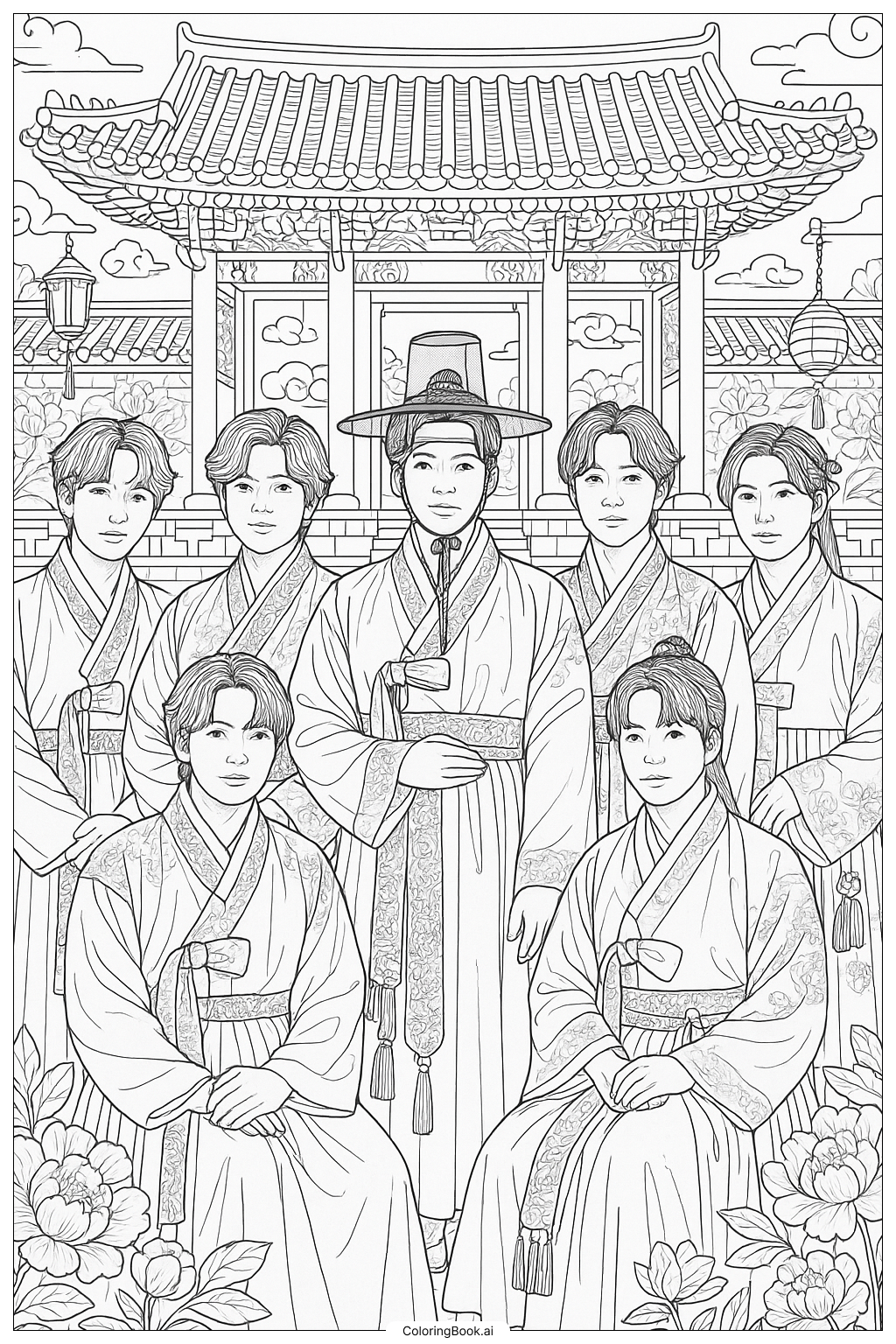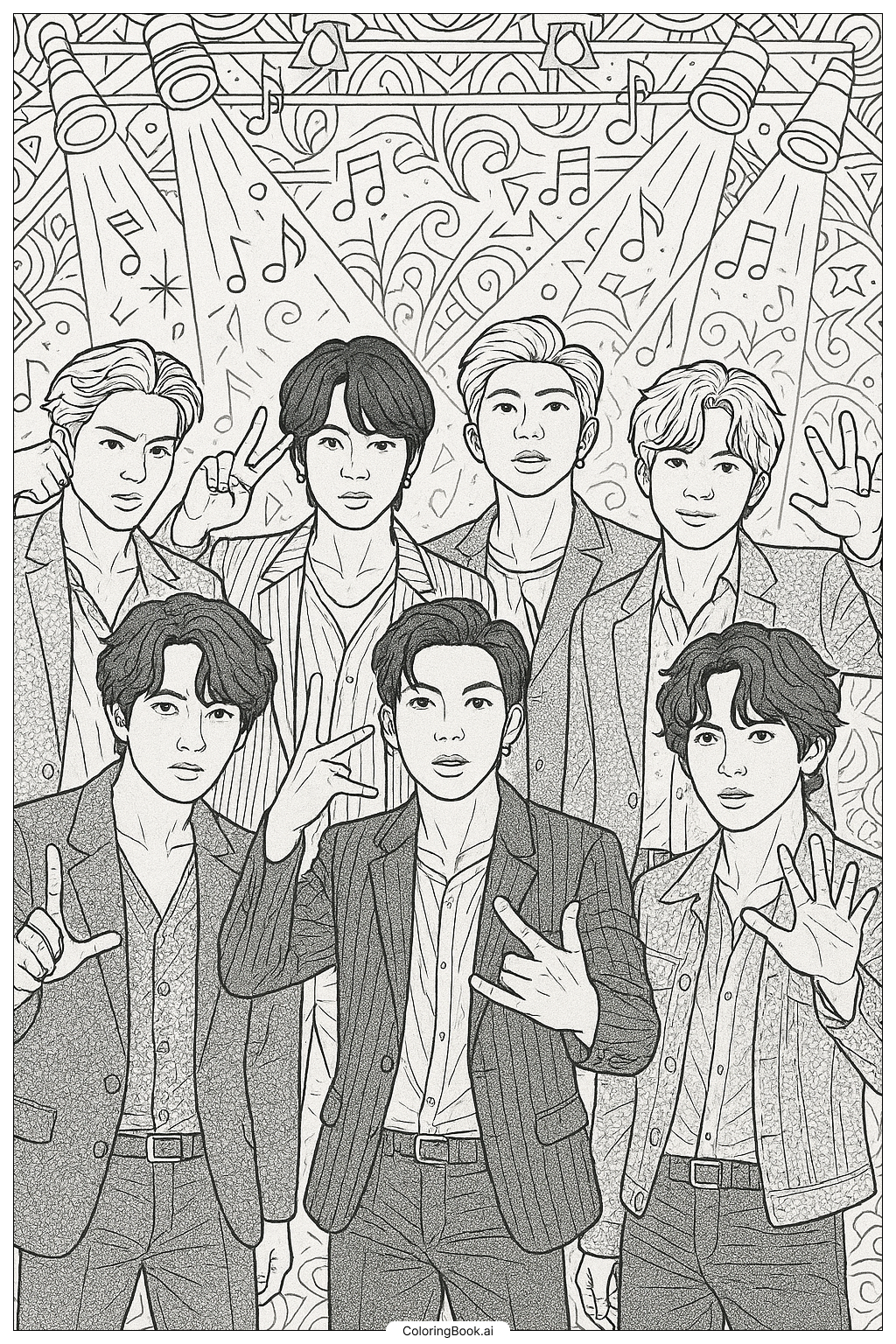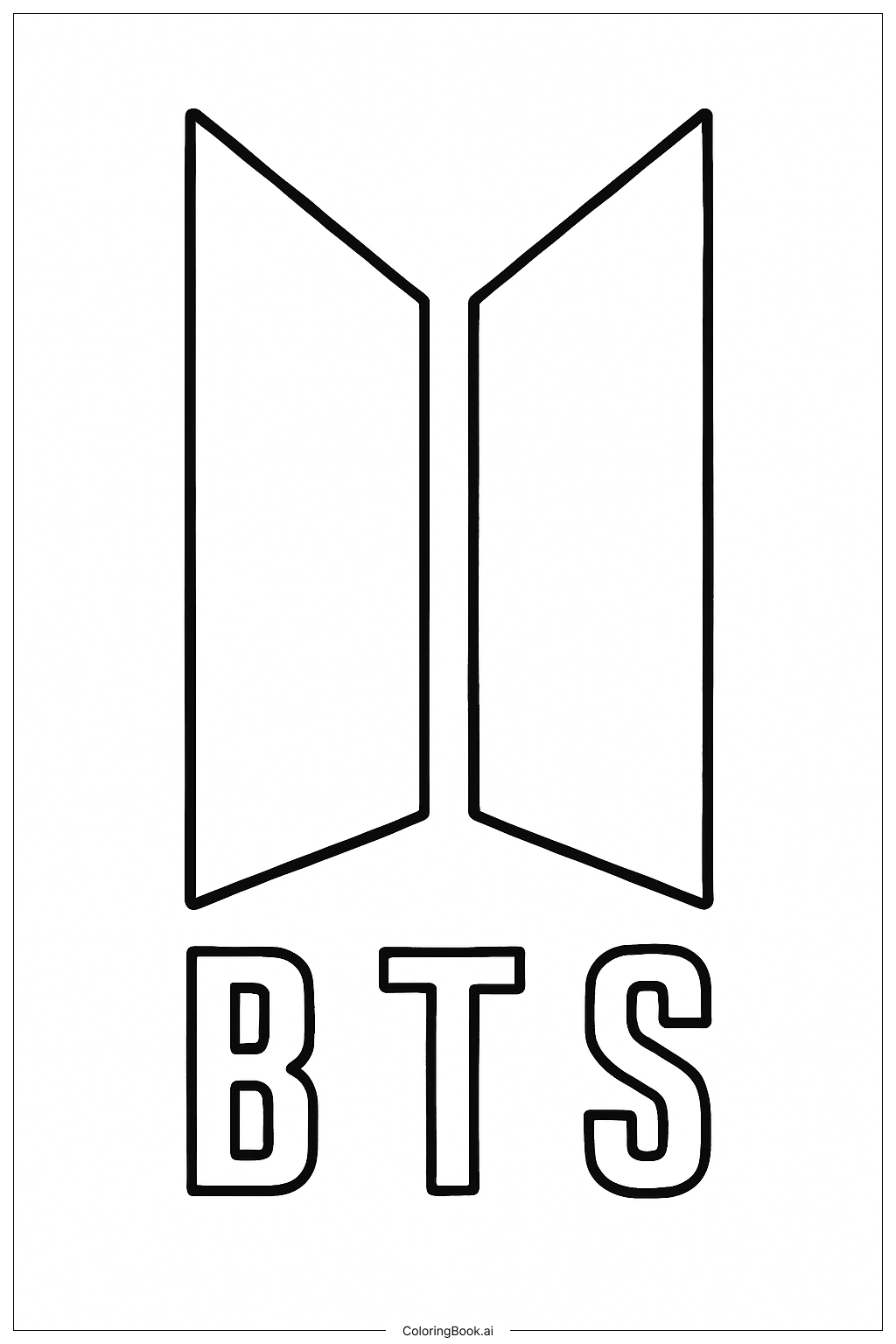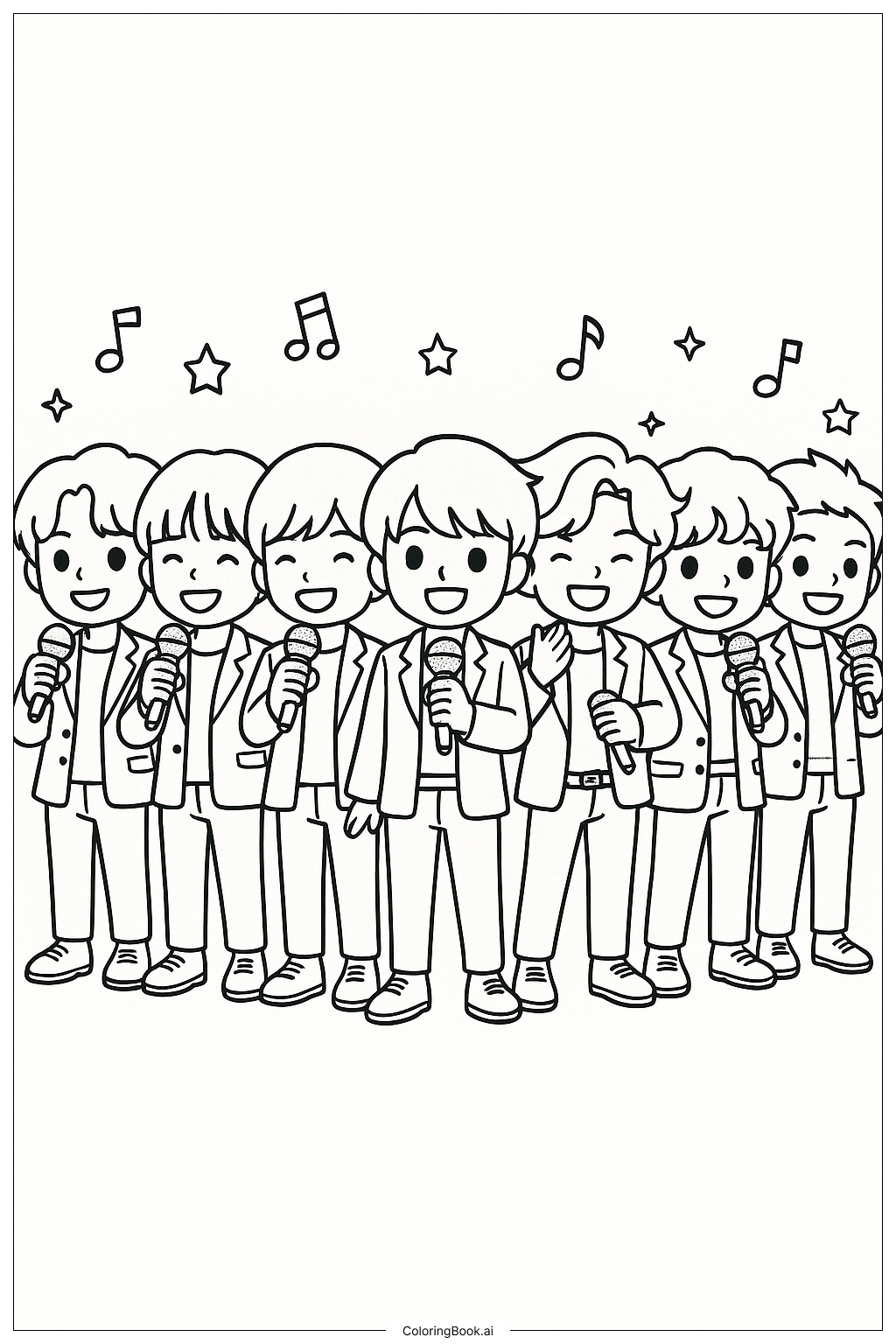Coloring tips: How to color BTS In Traditional Korean Hanbok coloring page well?
For a fun coloring experience, consider using bright colors for the Hanboks, reflecting the vibrant spirit of Korean festivals. Shades of red, blue, green, and yellow can bring the outfits to life. Use earthy tones for the pavilion and incorporate light colors for the background sky and clouds. For the flowers, choose a mix of soft pastels and vivid colors to create contrast and depth. Don't forget to add some shading to give an impression of sunlight and shadow, which will add dimension to your artwork!
Coloring challenges: Which parts are difficult to color and need attention for BTS In Traditional Korean Hanbok coloring page?
1. **Intricate Patterns:** The Hanbok features fine details and patterns that can be challenging to color. Children may need to be patient and cautious when filling these small areas to prevent mistakes.
2. **Blending Colors:** Achieving a harmonious blend of colors, especially for the floral designs, can be difficult. Kids might struggle with choosing complementary colors or blending techniques, which could require practice.
3. **Maintaining Consistency:** Keeping colors consistent across similar garments can be tough. Young artists may find it hard to remember which color they used for each figure.
4. **Background Elements:** The architectural details and background flowers add complexity. Ensuring the colors stand out without overwhelming the main characters requires careful thought on color choices.
5. **Shading Techniques:** Some children might find it tricky to apply shading. Learning to add depth and dimension to their coloring may need support and guidance.
Benefits of coloring books: Advantages of drawing BTS In Traditional Korean Hanbok coloring page
Coloring this beautiful image offers several benefits for children. It enhances creativity by allowing them to choose their colors and designs, supporting their artistic expression. Additionally, it improves fine motor skills as they practice precise coloring within the lines, which is essential for hand-eye coordination. Coloring can also be a relaxing activity, helping to reduce stress and promote mindfulness, allowing young artists to focus on the task at hand.
Moreover, as they explore traditional Korean culture through this artwork, children can gain knowledge and appreciation for diversity. This project can serve as an educational opportunity, encouraging discussions about cultural traditions and history. Overall, it is an enjoyable and beneficial activity for development and learning.




